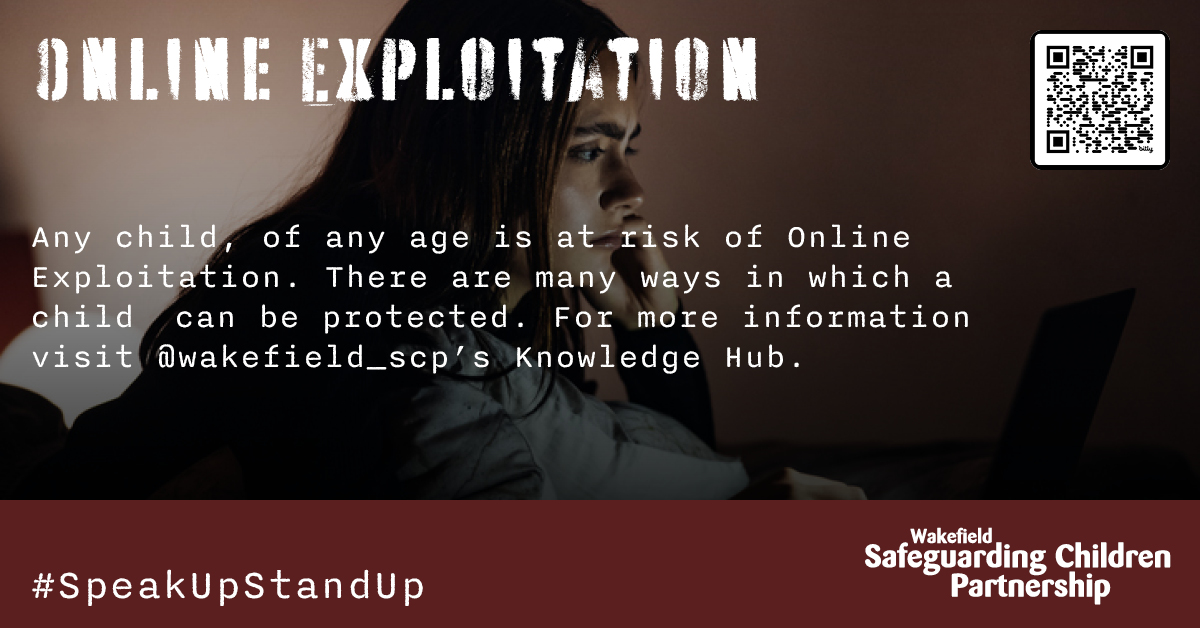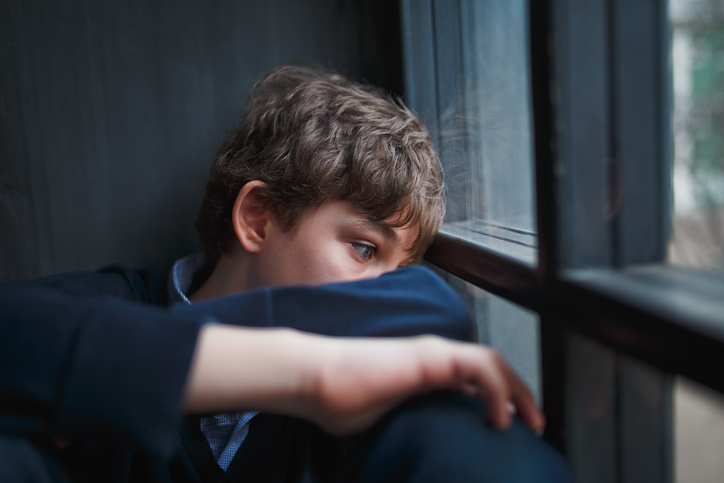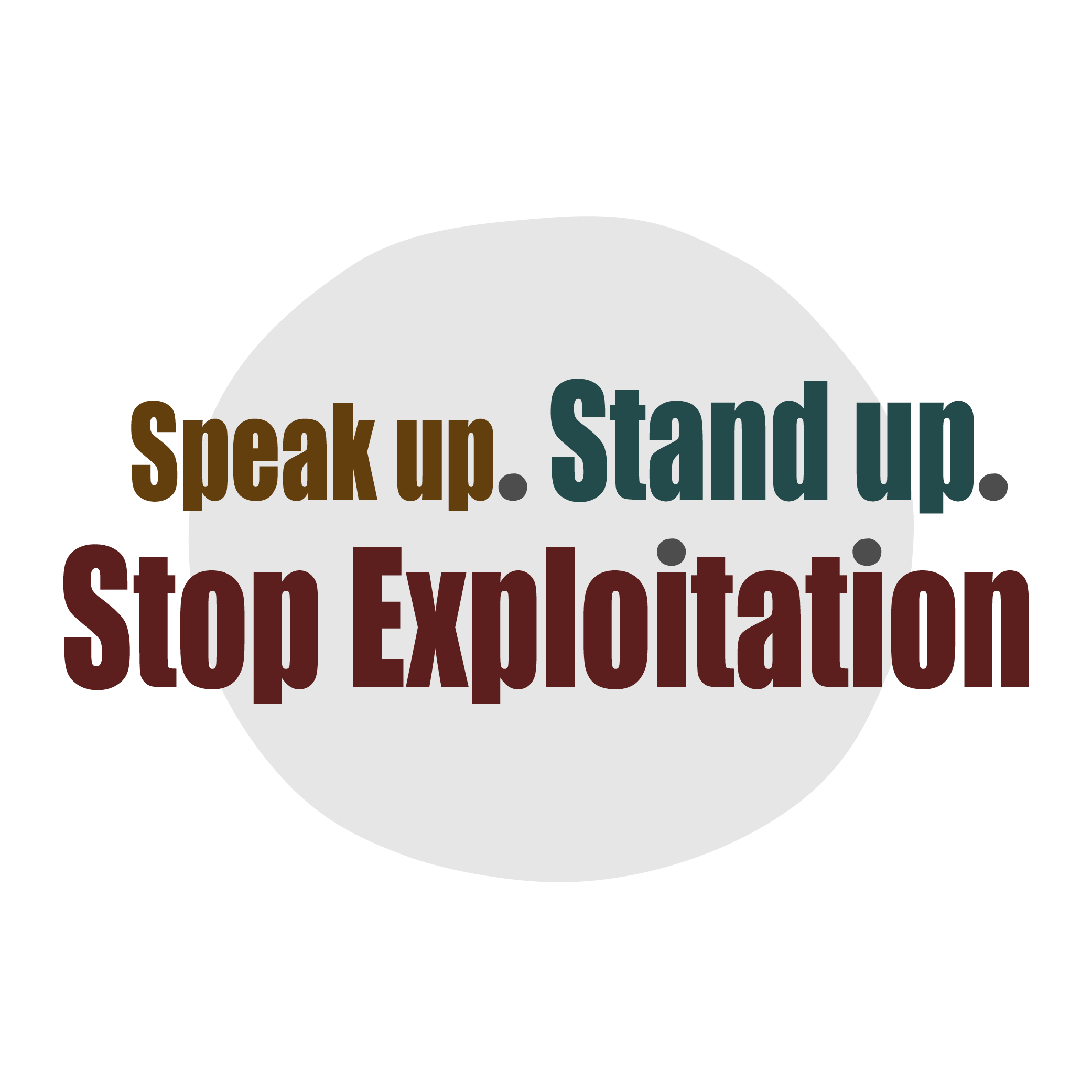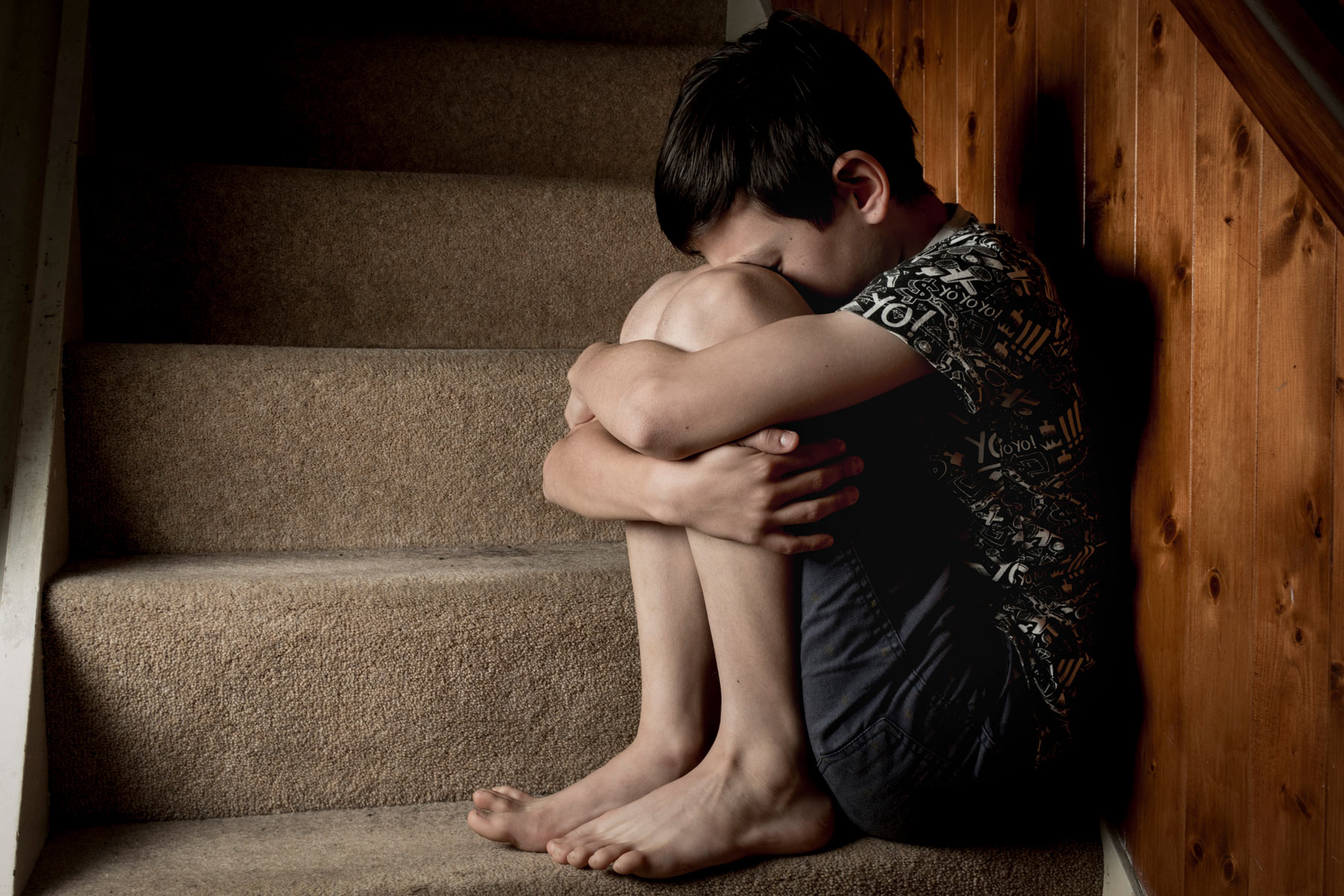Last reviewed May 2024
- Adversity, Trauma & Resilience
- Campaigns
- Child Exploitation
- JTAI
- Managing Allegations and Concerns About Those Who Work or Volunteer with Children
- Neglect
- Key Safeguarding Forms, Tools, Standards & Frameworks
- Learning from Reviews & Audits
- One Minute Guides
- Procedures
- Safeguarding Babies & Infants
- Wakefield Child Death Arrangements
One Minute Guide to Child Online Exploitation
What is Child Online Exploitation?
Child Online Exploitation happens within an individual or group using online platforms take advantage of an imbalance of power to coerce, manipulate or deceive a child under the age of 18 into sexual and/or criminal activity that can occur both online and offline.
The act of developing a relationship with a child to enable their abuse and exploitation through online platforms, such as online gaming, social media, messaging and live streaming indicates online exploitation. Perpetrators can use online platforms as a way to criminally exploit children by coercing them into criminal activity and then monitoring and controlling their movements.

-
Show details
 and remote mothering Organised crime groups can track the location of a child through apps to coerce their behaviour and blackmail them into criminal activity. This is sometimes known as remote mothering.
and remote mothering Organised crime groups can track the location of a child through apps to coerce their behaviour and blackmail them into criminal activity. This is sometimes known as remote mothering.Children can also be a victim of money laundering where an online bank or game account can be used to hold or ‘clean’ money from criminal activity. This is sometimes known as ‘squaring’.
Children that are most at risk of 'offline' exploitation are also the most at risk of 'online' exploitation
-
Show details
 Identity theft
Identity theft to create fake profiles, make fraudulent transactions, or commit other crimes (sometimes without their knowledge of the crime)
-
Show details
 Cyber bullying and harassment
Cyber bullying and harassment to intimidate or humiliate using digital platforms, which can sometimes escalate to threats and explicit content sharing
-
Show details
 Sexting
Sexting communication between individuals that involves sexual content. This can be through text messages, images or videos. Visit Childline for more information here
-
Show details
 Sextortion Visit Metropolitan Police website for more information here
Sextortion Visit Metropolitan Police website for more information here
Sextortion is a form of blackmail. It involves threatening to publish sexual information, photos or videos about someone. This may be to extort money or to force the victim to do something against their will.
-
Show details
 Online grooming
Online grooming perpetrators may establish relationships with children online with the intent of exploiting them sexually and/or criminally. Perpetrators often manipulate and deceive children to gain their trust before engaging in exploitative activity.
-
Show details
 Child sexual abuse material (CSAM)
Child sexual abuse material (CSAM) the creation, distribution, or possession of explicit images or videos involving children. As well as the creation of Deep Fake images/videos of CSAM material. Read more here
-
Show details
 Sex trafficking
Sex trafficking forcing or coercing children into sexual activities through online platforms, often involving human trafficking.
-
Show details
 Online scams
Online scams phishing, fraudulent websites, or deceptive online schemes. Scammers may exploit a child’s lack of experience to trick them into sharing personal or financial information.
-
Show details
 Online challenges
Online challenges viral stories, hoaxes, or digital ghost stories can appear online through social media or other online platforms. The ‘challenges’ themselves can vary but often encourage individuals to harm themselves, others, or property in the real world.
-
Show details
 Privacy violations
Privacy violations children may unknowingly share sensitive information online, such as their location, school details, or personal habits which may put them at serious risk.
-
Show details
 Invasion of privacy through Apps and devices
Invasion of privacy through Apps and devices the collection of excessive personal data can sometimes be misused or exposed in security breaches.
-
Show details
 Unwanted Contact / Cyberflashing using Airdrop
Unwanted Contact / Cyberflashing using Airdrop children may receive unsolicited messages, friend requests, or communications from strangers online, which could potentially lead to dangerous situations.
Indicators that a child may be being exploited online:
Changes in young people’s behaviour could indicate exploitation. Look for things that don’t seem right and listen to yourself. If things don’t feel right they’re probably not.
- Talking about older or new friends they’ve met online
- Talking about gifts or money they’ve received online
- Becoming withdrawn and secretive
- Having a new phone or more than one phone
- Receiving large number of calls or messages
- Worried about being away from their phone


Prevention & Risks
Taking a holistic approach.
Understanding a child’s life involves taking a holistic approach and having an awareness of their online presence is as important as any other information we may gather about a child. Taking a contextual safeguarding approach to better understand the risks, the preventative measures we can take, how to spot the signs of abuse and what we can do about it, will keep a child from harm.
Being proactive and regularly monitoring their digital world can keep a child safe online. Take a look at some of the strategies on our online webpage to get you started.
To read more about AI, the Metaverse and VR visit the WSCP online exploitation webpage.

Practical tips
-
What can you do?
· Check games content and features (Is it appropriate? Will they have online access?)
· Use privacy and parental controls
· Turn location settings off
· Make an agreement about use and time online -
Talk to children about:
· some people may pretend to be someone else
· The risks of giving personal data to anyone online (eg address, photo, school, bank details)
· the danger of meeting up with someone who they met online in the real world
· Always telling a trusted adult if they are planning to do this and how to be safe
· Share the same curiosity for online friends as you would for offline friends
What is the impact of Online Child Sexual Abuse?
This type of abuse can lead to the same psychological harm as physical abuse and can include the following effects:
- self-blame
- flashbacks or intrusive thoughts
- difficulties sleeping
- nightmares
- extreme tiredness
- difficulties concentrating
- difficulties keeping up with school work
- behavioural problems at school
- depression
- low self-esteem
- social withdrawal
- panic attacks and anxiety
- eating disorder or eating difficulties
- self-harm

Read more from the Home Office on the Interim Code of Practice on Online Child Sexual Exploitation and Abuse which provides detailed guidance for companies on actions they can take to tackle online child sexual abuse that occurs on their services or platforms.

Responding to online abuse
Children have grown up in an interconnected world. Online and offline experiences are equally real and valid.
Talk to children about being safe online. Let them know they can talk to you about anything they’re worried about or experiencing.
Any child can experience online abuse. If a child has disclosed that they’ve experienced abuse online, or you’ve noticed something worrying, you must respond appropriately. If a child is in immediate danger you must call the police on 999.
- See our online exploitation webpage for more advice
- Report Harmful Content through the Internet Watch Foundation website.
- Information Reporting Advice also at CEOP
Tools & Further information
- How TikTok affects children’s mental health | The Children’s Society (childrenssociety.org.uk)
- As addressed in the Online Safety Bill, cyberflashing will become a criminal offence with perpetrators facing imprisonment for up to two years.
- SWGFL online safety advice for schools
- NSPCC staying safe online advice
- YGAM Gaming and Gambling harm education and training
- Marie Collins Foundation support for Technology Assisted Child Sexual Abuse (TA-CSA)
- iNEQE apps to make safeguarding easier
- The Children’s Society Preventing CSA online


